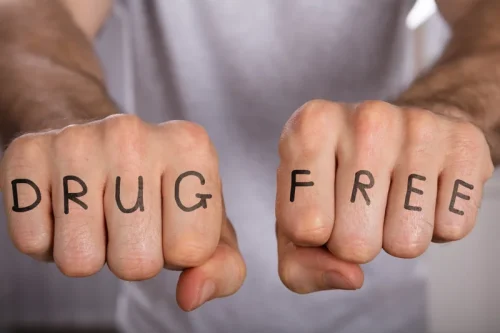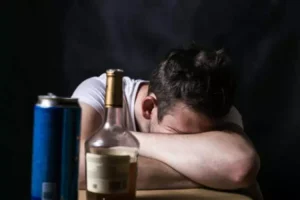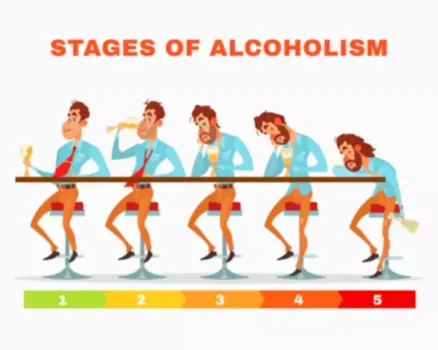
Over the years, a person who occasionally drinks or uses drugs casually may develop a habit that can become an addiction. The addictive potential of some substances may be so strong cycle of addiction that what seems to be an instant addiction may develop. This might include family and friends, support groups like Alcoholics Anonymous or Narcotics Anonymous, and ongoing therapy.
Drug Addiction and Alcohol Effects on the Brain
Synthetic cathinones, more commonly known as “bath salts,” target the release of dopamine in a similar manner as the stimulant drugs described above. To a lesser extent, they also activate the serotonin neurotransmitter system, which can affect perception. Synthetic cannabinoids, sometimes referred to as “K2”, “Spice”, or “herbal incense,” somewhat mimic the effects of marijuana but are often much more powerful. Drugs such as MDMA (ecstasy) and lysergic acid diethylamide (LSD) also act on the serotonin neurotransmitter system to produce changes in perception. Fentanyl is a synthetic opioid medication that is used for severe pain management and is considerably more potent than heroin.
Too much pleasure can lead to addiction. How to break the cycle and find balance
The Addiction Timeline isn’t just about behavior – it’s etched into the very architecture of the brain. This preoccupation can be all-consuming, interfering with daily life, relationships, and responsibilities. Individuals in this stage may find themselves constantly thinking about their next opportunity to use, planning how to obtain the substance, or reminiscing about past experiences of intoxication. Drug and alcohol addiction research has clearly demonstrated that the addicted brain is chemically and physiologically different from a normal brain. The idea of addiction being a neurological disorder is critical to understanding its development and the recovery process.

Adolescence, Brain Change, and Vulnerability to Substance Use Disorders

Addiction refers to behavior patterns where people continue seeking and using habit-forming substances. People with addiction keep using habit-forming substances, which cause tolerance and withdrawal symptoms. Addiction leads to harmful consequences and lasting brain changes, setting it apart from other substance misuse. Addiction alters the brain chemistry affecting the process of thought and decision-making. The definition of addiction also includes strong references to denial, minimization and justification, all of which are primitive internal defense mechanisms. After the addiction is acknowledged, the addict may ultimately be forced to decide to stop using chemicals, thus breaking the cycle of addiction.
- Neuroscientific research provides insights into the brain changes that underpin addiction, highlighting alterations in brain systems such as reward, stress, and self-control.
- At The Recovery Village Rehab Centers, we take the extra steps to treat your addiction or mental health needs by offering a full continuum of care.
- His commitment to sharing stories of hope and resilience has established him as a credible and respected figure in the addiction treatment community.
- Co-occurring mental health disorders are common among those with substance use disorders.
- The aim is to sustain the newfound life and to stick to lessons learned through the phases of treatment.
Depending on many genetic and environmental factors, some first-time users may not continue the cycle of addiction. In contrast, others may start progressing through the cycle and form a substance use disorder. For individuals in the first two stages of initial use and abuse, outpatient treatment and behavioral health counseling may be all that’s needed to get back on track. This first use of drugs or alcohol might be all it takes to form an addiction due to the rush of dopamine to certain neurotransmitters in the brain. The individual may continue chasing that rush or high after the drug’s initial use (e.g., using opioids or even drinking alcohol). Despite the common belief that there are only casual users and full-blown addicts, addiction is a brain disease that occurs in stages.
What Stage Of The Addiction Cycle Has Withdrawal Symptoms?
These findings in the cerebellum have particular relevance in the context of behavioral sensitization, a critical component in the addiction process. Identification of these molecular and neurochemical loads on the circuitry provides key information about vulnerability, resilience, treatment, and recovery from addiction, as well as information on how different drugs of abuse enter the overall addiction cycle. Non-drug addictions, such as pathological gambling, have a similar behavioural phenotype that fits into the three-stage cycle. Key questions that remain are what genetic factors load these mini circuits, how the environment conveys epigenetic influences on these circuits, and how these circuits recover or do not recover with abstinence and treatment.

Lembke says this balancing see-saw of pleasure and pain made sense in the time of early humans, when we had to constantly search for our basic needs – food, water, shelter. “It’s really an ingenious method to make sure that no matter what we do, that’s pleasurable. It doesn’t last very long and it’s followed by pain so that immediately we’re searching again,” she explains. Despite being aware of these harmful outcomes, many people who use drugs continue to take them, which is the nature of addiction. A chemical substance that binds to and blocks the activation of certain receptors on cells, preventing a biological response. The process by which presentation of a stimulus such as a drug increases the probability of a response like drug taking.
They include patients in treatment for opioid addiction, such as Stephanie, for whom a loss of coverage can bring fatal risk. Medicaid in Florida covers methadone, which reduces her opioid cravings and prevents withdrawal symptoms. Maintenance can also become difficult when the stress of life catches up with you and the old, familiar ways of coping—the addictive behavior—re-surface. https://ecosoberhouse.com/ This is why it is important to learn new ways of coping with stress during the action stage so that alternative strategies will be available to you during the maintenance stage. Depending on the goals you set in the contemplation stage, and the plans you made in the preparation stage, the action stage can occur in small, gradual steps, or it can be a complete life change.
Importantly, positive and negative reinforcement need not be driven solely by the effects of the drugs. For example, the approval of peers positively reinforces substance use for some people. Likewise, if drinking or using drugs with others provides relief from social isolation, substance use behavior could be negatively reinforced.
